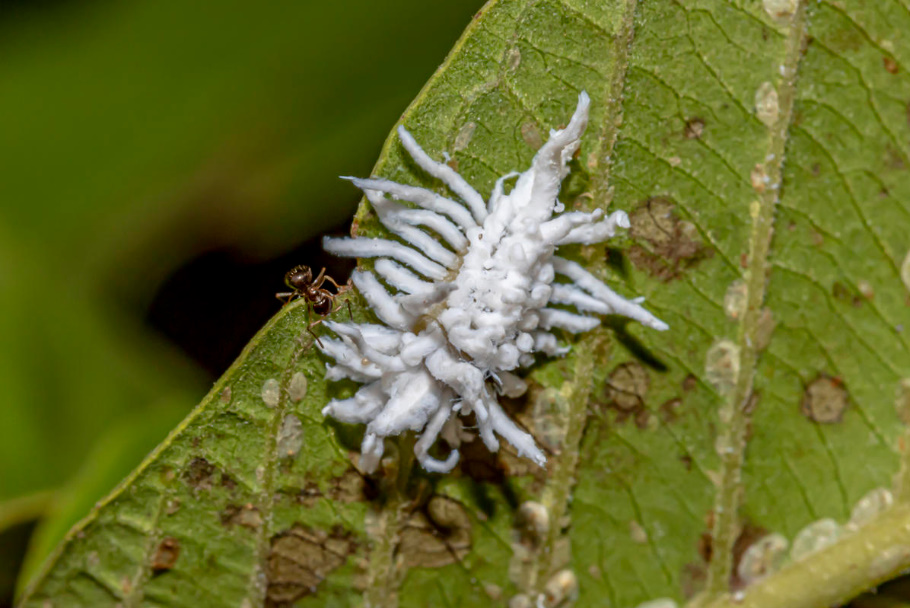And what are we all about tomatoes and cucumbers? There are still houseplants. Have you noticed that a white coating has appeared on the leaves of your favorite ficus, similar to either cotton wool or felt? Perhaps it’s a mealybug. Let’s figure out what kind of “beast” it is and how to deal with it.
Meet mealybug
This insect belongs to the order Hemiptera. These are insects that have one of the main distinguishing features — a piercing-sucking oral apparatus. The aphid known to all belongs to the same group.
In the order Hemiptera, which are innumerable, entomologists distinguish the superfamily Coccoidea. It, in turn, includes Diaspididae and Pseudococcidae. They differ from each other in the way they protect themselves from external influences — female Diaspididae, like knights, use shields covering the insect’s body and egg laying, and female Pseudococcidae (including mealyworm) wear “fur coats” of waxy secretions. All members of the Coccoidea family feed on plant juices, therefore they are considered pests.
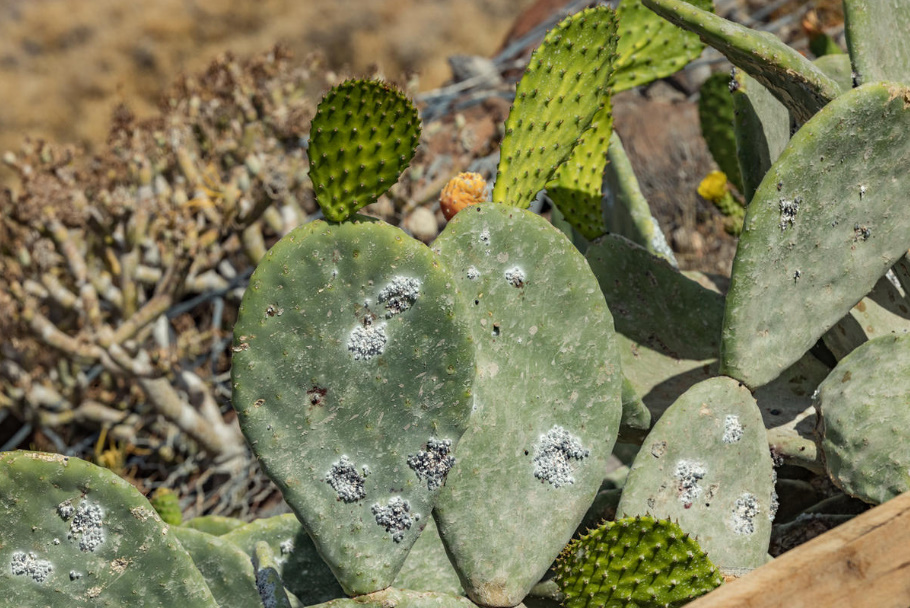
Although there are several species of Pseudococcidae that are specially bred, this is Dactylopius coccus. The body of Dactylopius coccus females contains a large amount of carmine acid, from which carmine is obtained — a bright red dye. The most famous are Dactylopius coccus and Porphyrophora hamelii: the amount of carminic acid in them is the largest. Carmine has been used for dyeing fabrics and wool for carpets since the VII century BC. Also, carmine is an additive E120, a food dye, thanks to which, for example, sausage has such an appetizing pink color.
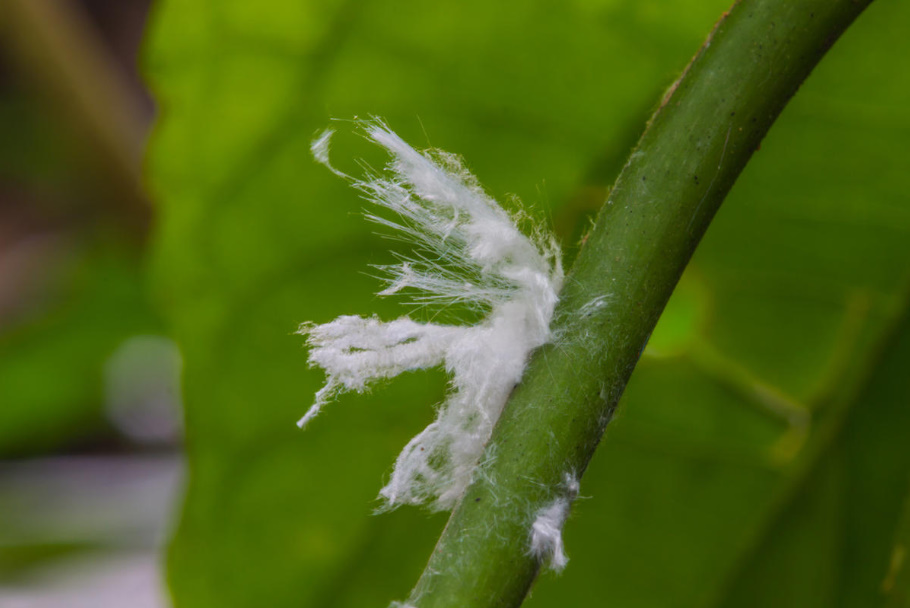
Mealybugs lay eggs in bags made of fibers and waxy secretions resembling pieces of cotton wool or felt. The lifestyle of these insects is quite entertaining — and not only for insect specialists. Like all representatives of Hemiptera, mealybugs are insects with incomplete transformation. That is, in the process of its development, it passes from the egg through several ages of the larva (nymph, which is not too different in appearance from an adult), and then turns into an adult sexually mature insect, bypassing the pupal stage.
Having been born, the larvae of the first instar lead an active life, moving in search of forage plants. For this passion for movement, they are called vagrants. The nymphs of mealybugs look like an adult female, but are smaller and have not yet managed to get a “fur coat” — a cover of wax.
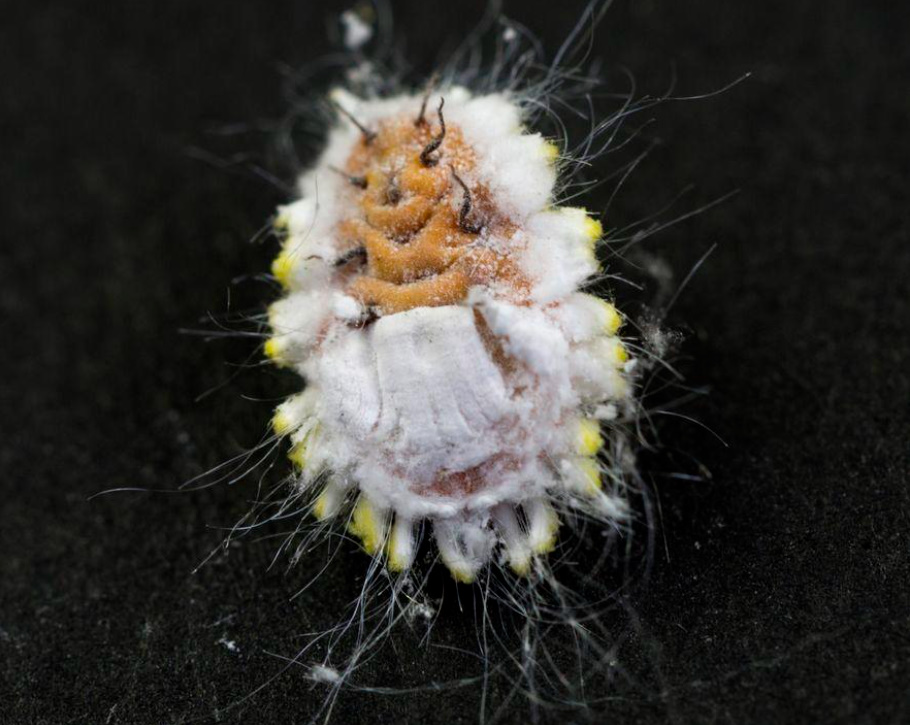
By the third age (molting) of nymphs, the paths of males and females radically diverge. Males undergo two more stages of metamorphosis (larval ages), accompanied by molting, and turn into small winged flies. Their life span is short — only 1 day, so they do not eat, they even have atrophied oral apparatus.
The female mealybug gets stuck in its development at the stage of the third instar of larvae, it becomes sedentary and grows overgrown with wax “fur” (therefore, worms are also called hairy lice). They form colonies, spending time sucking the juices of the plant and laying eggs.
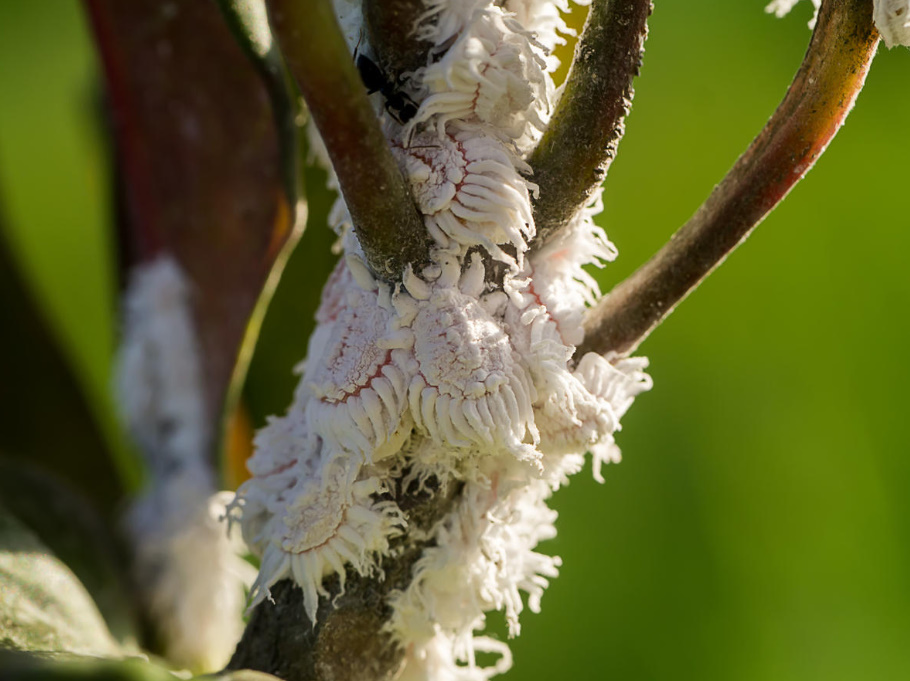
Mealybugs prefer secluded places — the back of leaf plates, leaf axils. However, they can also be located in plain sight, creating extensive clusters on leaves or young shoots.
The female lays hundreds of eggs, and after about 2-3 weeks, offspring appear from them. Some types of mealybugs are viviparous. Further, during the period of vagrancy, nymphs can populate other plants, moving with the help of the wind or traveling on a person or animal.
Varieties of Pseudococcidae
Scientists know more than 2000 species of Pseudococcidae. Most of them live in tropical countries, so these insects have become a significant problem not for gardeners, but for lovers of indoor plants, because the bulk of the green beauties on our window sills come from the tropics.
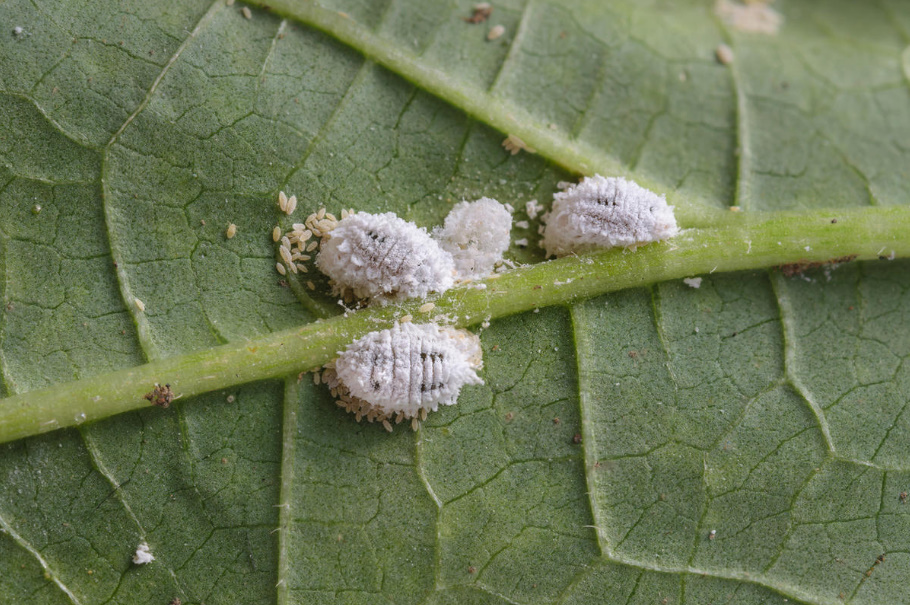
Other numerous varieties come to us simultaneously with their food supply: they are sold together with it in a flower shop — and can turn the life of lovers of Orchids, Saintpaulia, Cacti and other Dracaena with Monstera into hell.
How mealybugs harm the plant
They do not gnaw holes in the leaves, but make a small puncture and suck out the juices. In some varieties, females, having moved from vagrancy to a sedentary lifestyle, lose their limbs in the process of metamorphosis and spend the rest of their lives in one place, feeding on the juice of the plant and producing offspring. Especially the relatives of the Diaspididae worms differ in such habits, acting under a shell-shield made of skin discarded during molting and wax secretions.
From the activity of mealybugs, the plant slows down in growth, shoots and buds are deformed. Some varieties can also damage the roots, settling in the surface layer of the soil.
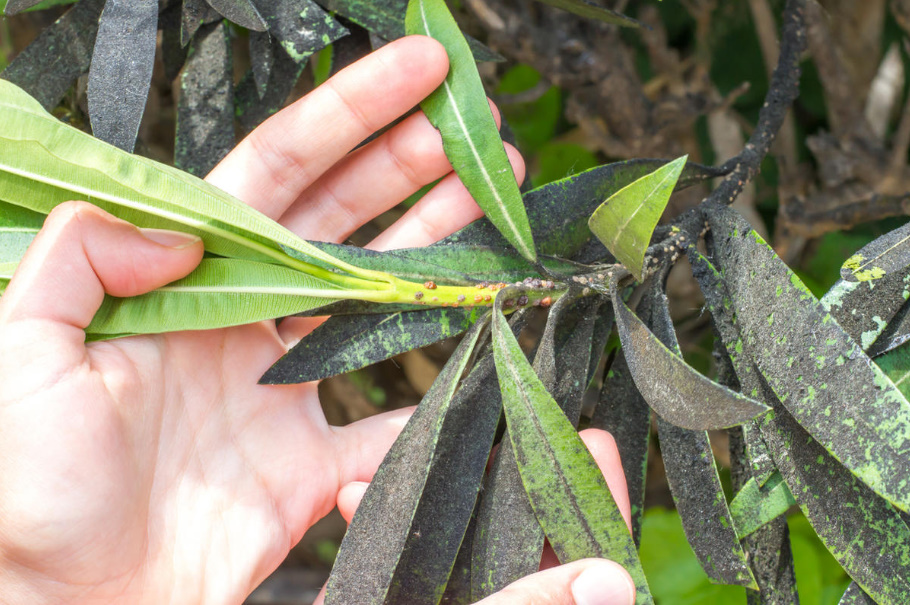
There are a lot of sugars in the sucked juice of plants, but the insect mainly needs protein. Therefore, they are forced to consume a lot of food — and allocate excess sugar in the form of honey paddy. This attracts ants, which can take care of colonies of mealybugs, protecting them from insect predators (as with aphids). Sticky sweet liquid on the surface of the leaves becomes a breeding ground for a sooty fungus — mold from the genus Aspergillus. The film of blueberry (sooty fungus) clogs the pores of the leaf and slows down, or even completely stops photosynthesis. As a result, the leaf gradually dies off, and the plant weakens.
Pest control
Plant owners, of course, are interested in reading at their leisure about how small bugs live, but the more pressing problem is choosing a reliable way to deal with them.

Mechanical method
If the mealybug has not spread too much on your plants, you can apply mechanical removal: clean the leaves from insects with a brush, paying special attention to all sorts of secret places, and then thoroughly wash the leaves and stems. If you suspect that they are hiding in the ground, transplant a green pet, carefully shaking the soil from the roots or even washing them.
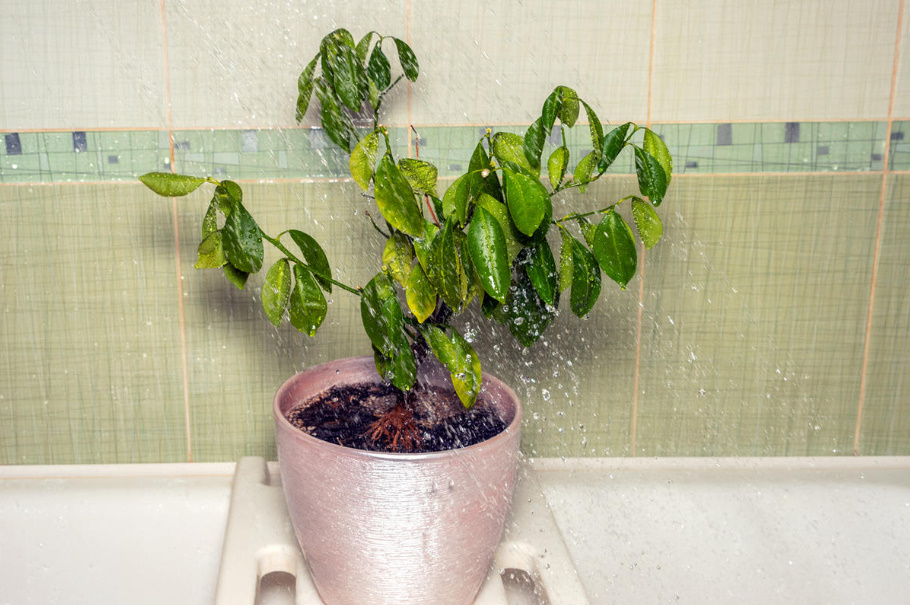
Folk remedies
There are many tips on the Internet on how to defeat mealybugs without using poisons. For example, pour 1 liter of boiling water 5-6 crushed garlic cloves, let it stand for several hours, and then apply the infusion to the plant with a sprayer or brush. You can also prepare an infusion for spraying from orange or lemon crusts. It is assumed that the smell of citrus will scare away insects. In my opinion, the method is questionable: if the smell of an orange causes mealybugs to leave the plant, then where will they go in an apartment? Most likely, they will move to a neighboring, unprocessed flower.
You can find ways to fight based on trying to starve them. To do this, the leaves of the plant are treated with substances that create a film that makes it difficult to suck out the juices — with a soap solution or a mixture of water with vegetable oil. But if we take into account the way of life of insects, this measure will again affect only a certain number of “vagrants”: the females of mealyworms and scabies often, having once stuck to a leaf, no longer change their location.
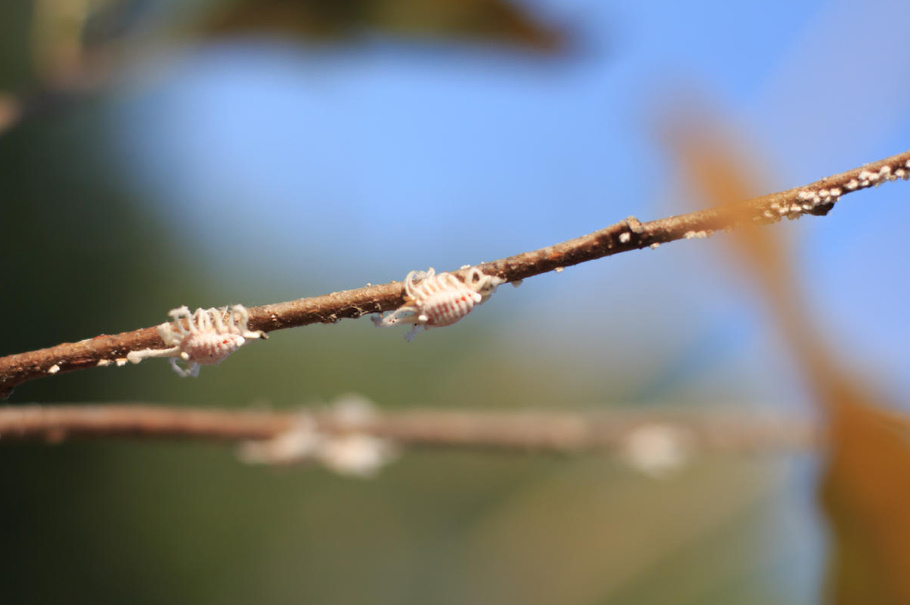
Chemical insecticides
From any contact preparations, the mealybug is reliably protected by the notorious wax “coat” (or shell in the case of shields). Of course, some part of the larvae that have not yet managed to acquire a protective coating will die from toxic substances, but there will be females who will lay new eggs. This method is suitable only if the insect population is insignificant.
Only those drugs that have a systemic effect are effective against them: the poison gets into the juice of the plant, and then kills the insect that feeds on this juice. The most effective means based on neonicotinoids. Other types of systemic insecticides are also effective. Preparations need not only to spray the plant, but also to shed the soil.
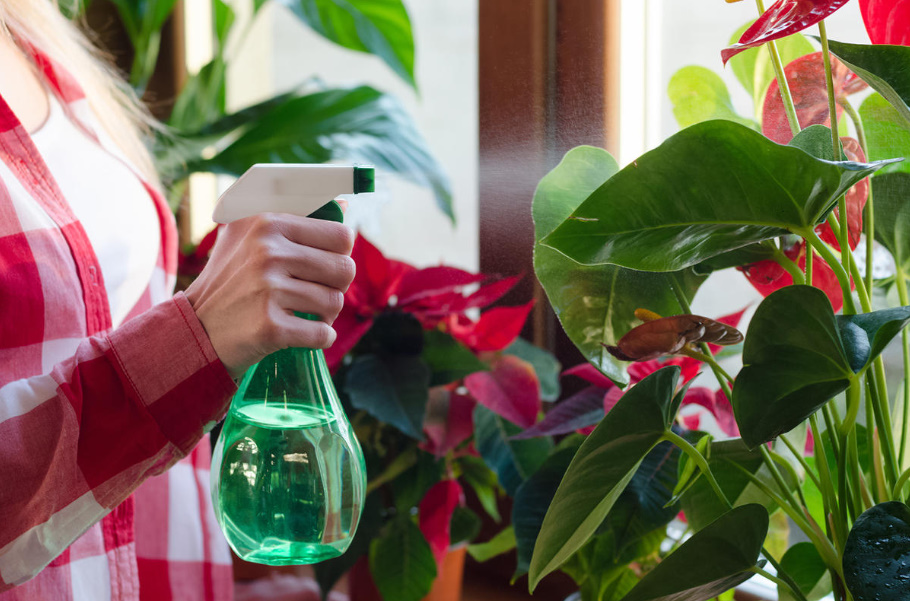
Biological means of control
Systemic insecticides are effective for use on ornamental crops. If the fruits are supposed to be eaten, then this is not always a convenient way. One of the most reliable methods is the use of entomophages, insect predators, natural enemies of pests. True, this option is not suitable for use in an apartment, but it will work perfectly in greenhouses.

It is also important to carry out preventive measures. Carefully inspect the plants when buying, newly purchased ones — be sure to quarantine them for a while to avoid possible pest infestation of other green pets.
It can be difficult to overcome the invasion of mealybug, but it is quite possible. Have you ever encountered this harmful insect? Tell us in the comments how you got rid of it.
